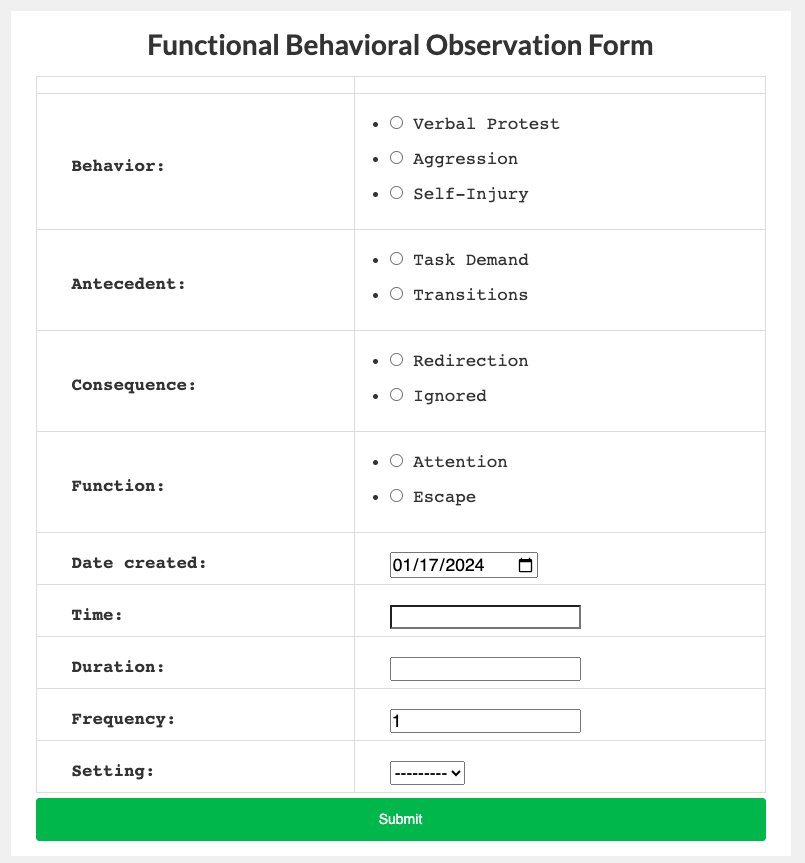Exploratory Data Analysis
This website applies Exploratory Data Analysis (EDA) to create Functional Behavior Analyses (FBA), enhancing the understanding and management of behaviors. EDA identifies key variables, patterns, and relationships within behavioral data. Systematic data collection through Functional Behavior Observation (FBO) forms supports analysis of antecedents, behaviors, and consequences, facilitating data-driven decisions for designing effective interventions.

Create a Functional Behavior Observation Form
A Functional Behavior Observation (FBO) form is crucial for collecting data on antecedents, behaviors, and consequences. This tool allows behavior analysts and educators to analyze patterns, helping to establish the relationships between these elements. You can create custom behaviors, antecedents, and functions to suit specific needs.

Artificial Intelligence
AI enhances Behavior Support Plans (BSPs) by analyzing FBO data to identify behavior triggers and suggest interventions. It recommends replacement behaviors, teaching strategies, and reinforcement systems, continuously refining BSPs through data-driven insights for measurable outcomes.

Data Visualization
Exploratory Data Analysis (EDA) facilitates visual representation through plots, graphs, and charts. These visualizations help identify patterns and trends, enabling you to discover relationships between variables and communicate findings clearly to stakeholders.

Statistical Analysis
Automatically generated data tables based on FBO data provide insights into frequency distributions and relationships between variables. These tables help link behavior, antecedents, consequences, and functions, offering a comprehensive view of behavioral patterns.
